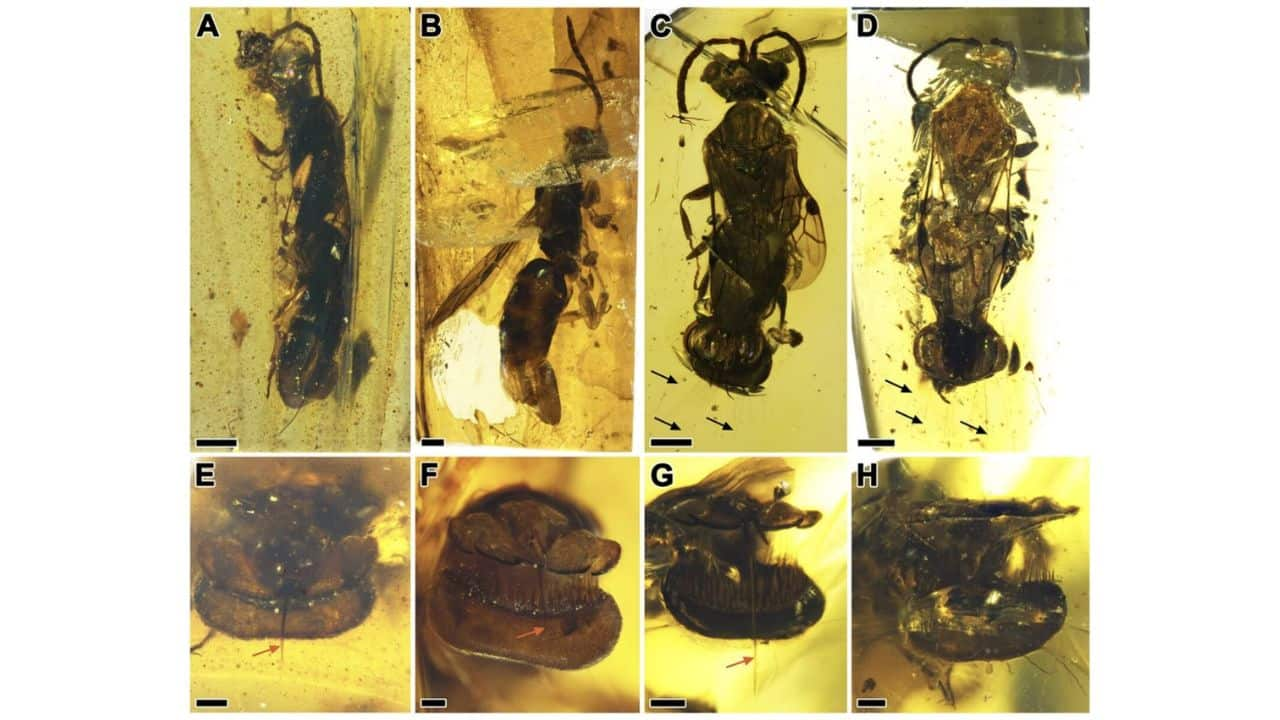



Scientists are being astonished by a tiny insect that has been locked in amber for 99 million years. It has a strange, jaw-like abdomen unlike any wasp ever seen. This strange feature implies a gruesome purpose—pinning down victims while laying eggs inside.
A Discovery Like No Other
Sixteen female wasps were discovered in ancient Kachin amber, a unique find. Their backs are completely different from their front sections, which are similar to today's wasps. They have bristly, paddle-shaped flaps on the bottom of their abdomen. In a manner similar to a Venus flytrap closing in on food, these flaps seem to open and shut.
 A-D display lateral and dorsal views of the wasps, while E-H highlight their posteriors, including the ovipositors. (Image: Qiong Wu)
A-D display lateral and dorsal views of the wasps, while E-H highlight their posteriors, including the ovipositors. (Image: Qiong Wu)
Scientists from Beijing's Capital Normal University, led by Qiong Wu, believe that this configuration made it simpler for the wasp to lay eggs inside living hosts. The ovipositor, or egg-injecting tube, is encircled by flaps. This indicates that the wasp temporarily captured speedy insects before embedding its larvae.
A Lethal Reproduction Technique
The Dryinid wasp family contains contemporary wasps that entomb their hosts. But they snare prey using their front legs. Perhaps this ancient wasp worked differently, waiting patiently for unsuspecting creatures. The abdomen likely shut tight to immobilize the host when it came too near.
There are a few questions left unanswered since male specimens do not appear in the fossil record. Scientists have no idea whether this characteristic was exclusive to females or whether it served a purpose for mating. Since this behavior is rare in insects, though, scientists are skeptical that females used the structure to trap males.
The journal BMC Biology released this study.
Discover the latest Business News, Sensex, and Nifty updates. Obtain Personal Finance insights, tax queries, and expert opinions on Moneycontrol or download the Moneycontrol App to stay updated!
Find the best of Al News in one place, specially curated for you every weekend.
Stay on top of the latest tech trends and biggest startup news.